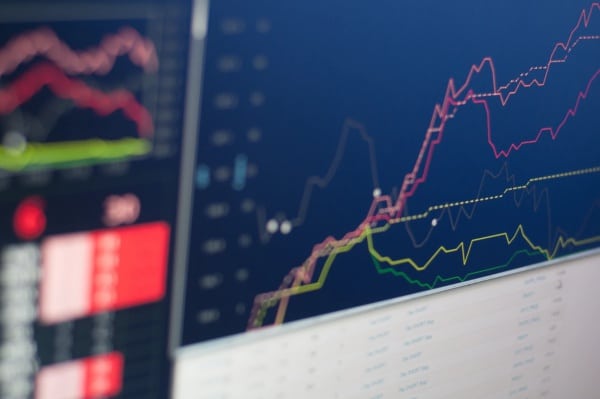A CFD trading strategy is important for any trader of this popular. There are risks associated with trading CFDs and having a solid strategy. Public Finance International has listed popular strategies and techniques for trading CFDs are listed below.

1. Range Trading
Range trading involves the use of a range when trading. A range trader will try to predict that a particular financial asset’s price will fall into a specific price range. The calculation is based on the market support and market resistance levels. These will add market support to market resistance to give a positive or negative figure. This figure is then added to the CFDs current price to get the range of the price’s direction.
2. Contrarian investing
The counteraction strategy. This strategy relies on the idea that only diamonds last forever whilst stock patterns and charts do not. With this method, you are betting on the hope that a change in trend is going to happen. I.e. if a chart trend is generally going up, then you will be anticipating the moment that that trend is going to change. There is an excellent opportunity for profit if you are correct. The best way that you can find the counterpoint for the stock is through wave theory and the other technical indicators that are available to CFD traders. It is quite a risky strategy but as often is the case with trading, high risk = high reward.
3. Trading Breakouts
This strategy is easy to understand and is popular among beginner CFD traders. It makes use of any signs of a breakout to enter a trade. You need to be monitoring the markets for a critical price. When that key price is achieved, you buy or sell.
Breakouts refer to when the price of a financial asset surpasses market resistance or market support levels. You can determine market resistance and support by using technical indicators such as chart and pattern lines.
When the price breaks out of these patterns, you can act. That is because the price will rarely remain in a breakout. It will either return to its regular price or continue to grow in the direction it broke out into. This movement in price is the opportunity to make profits.
If there is no clear trend or price movement, then you should avoid entering a trade. It can get tiresome watching the markets for opportunities but do not lose your head. It is like fishing. If nothing is biting, then you cannot force it. Patience is key. Remember that CFD trading is primarily based on the price difference. Keeping this in mind should allow you to understand why this method is prevalent among CFD traders.
4. Trend trading
Trend trading is when you make use of technical indicators to determine a trend direction. When you have this trend direction, you simply ride that wave for as long as you can making profits. If a financial asset is trending, then it is going in one direction more than another. You should be careful to avoid any counterpoints.
5. Swing trading
Swing trading is a strategy that involves looking for sudden spikes in the opposite direction. Swing trading is like contrarian in that it relies on a counterpoint. The difference is that swing trading is on a much longer and more significant scale. A trade will usually be placed at the beginning of the day and closed at the end of the day. Giving a CFD 12 hours, you will expect that at some point the trend will swing higher than when you bought or lower than when you sold.
6. News trading
News trading involves looking at the macroeconomic data in the markets. Some announcements have apparent impacts on the market. For example, if a big corporation announces that it made enormous profits this year, then it is likely that its stock is going to rise. News trading simply involves being ahead of the curve.
7. Hedging
Hedging is a strategy that is well applied in the finance industry. It involves placing bets against one another in a sense. The one trade you make should be hedged against another to protect your capital if you lose. It is a method that allows the trader to manage their risk. It usually is only applicable to traders who have a lot of experience and capital at their disposal.
Have a trading plan
Your trading plan will be a detailed guide on how to behave in the financial markets. It will dictate your profit and loss benchmarks. A trading plan dictates what kind of trades you enter and how much you invest per trade. Your trading hours should be outlined. Daily, weekly, and monthly goals are good to have. A solid plan takes out hesitation in your trading. Even a seconds delay can result in a loss. You should test out your trading plan with a demo account. Before trading on a real money account, make sure you nail down your plan.
Focus on capital preservation
Capital preservation is another important concept. When trading you need to prioritize money in your trading account. Set long-term goals, not short-term. Learn as much as possible with investing as little as possible. This is key to longevity. Research and try new strategies to see which work on the demo account. When you trust the system, you can move it to the real money account, but with proper capital allocation. Capital allocation is key. This way you don't have losses that cut your trading career short. Manage your money well. Understand margin accounts risks. Forcing trades is a recipe for losing money.
Learn from experience
Experience is a great way to learn trading. You have to be in trading situations to learn. A demo account is a good way to get experience without risking money. Open up the trading platform, start with a practice account and put your plan into play. Learn and adapt if needed. Practice makes perfect.
Analyze the market
Technical analysis of the markets helps with CFD trading. Make sure that you analyse the markets. You need to predict price movements. If you can't predict correct market movements, you lose money.
Fundamentals
Fundamentals are the basics. Focusing on company specific news and events, aid trading decisions. While fundamental trading is often used for long-term investing, rather than day, trading it is still useful. If a company announces a new product or their earnings report is positive, prices go up. That holds true the other way around. Prominent analyst upgrade or downgrade of a company is another opportunity for short-term trading.
Technical Analysis
Technical analysis is a powerful tactic for traders. Traders use historical market data with statistical analysis, behavioral economics to predict price movements. This is the mathematical side of the game. This method is an integral part of any trading strategy, because it works. Understanding how the market works and the psychology of the markets creates opportunities to profit.
Position sizing
Correct position sizing is an essential part of trading. Position size is the size of a position or the amount of money invested in a trade. To maximize returns and reduce risk traders use positions based on their portfolio size. Proper position size management is popular among day traders and Forex traders. As a rule of thumb, retail traders risk a maximum of 2% of their account value per trade. If you are using margin, you don't need the full amount of the trade size in your account.
To give an example margin can be 5% of 1000, meaning you would only pay $50 to enter the position. On a more volatile and unstable financial asset margin could be as high as 50%. Brokers set these rates according to what they believe is a more safe and reliable investment.
Manage risks with stop loss and take profit
Managing risks with stop-loss orders and take-profit points are an effective way to manage risks. A stop-loss point is the price a trader sets to automatically sell the asset. This prevents any emotions taking over and limit losses. Take-profit point is the price the trader sets to sell the asset and take profit.
Practice with a demo account
A CFD trading demo account is a great way to learn the ins and outs of the platform with no risk. Some brokers offer practise accounts with all the functions and markets, just like the real money account. A demo account is a trading simulator, allowing traders to test their trading strategies with virtual money. This allows you to build confidence and get familiar with the platform before depositing real money.



